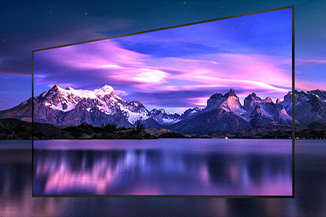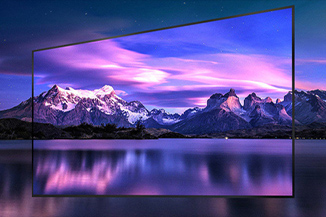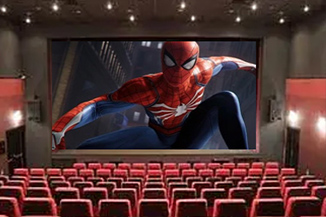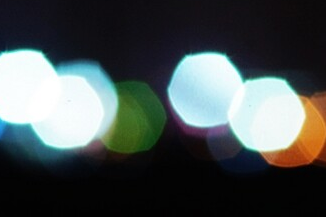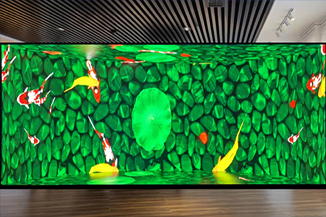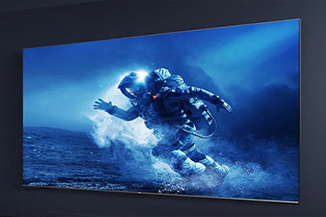Publisher: Supplier of LED Display Time: 2022-11-29 10:08 Views: 1406
When the LED display screen is used in control rooms, TV studios and other places, it may sometimes cause moiré interference to the camera picture. This article introduces the causes and solutions of moiré, focusing on how to choose an LED display to reduce or eliminate moiré. Next, Liancheng sent the editor to take everyone to take a look!
Full-color LED displays have gradually become mainstream display devices in control rooms and TV studios. But in the course of long-term use, it will be found that when the camera lens is aimed at the LED display, occasionally there will be stripes and strange colors like water waves (as shown in Figure 1), which is often called Moiré pattern. Phenomenon.
1. How does the moiré pattern come about?
When two patterns with spatial frequencies overlap, another new pattern is usually produced, which is usually called moiré.
The traditional LED display screen is made up of independent light-emitting pixels, and there are obvious non-light-emitting black areas between the pixels. At the same time, the photosensitive element of a digital camera also has an obvious weak photosensitive area when it is sensitive to light. When digital display and digital shooting exist at the same time, moiré patterns are produced.
Since the CCD (image sensor) target surface (photosensitive surface) of the camera is similar to the figure in the middle of Figure 1, and the traditional LED display is similar to the image on the left side of Figure 1, it is composed of uniformly arranged dot matrix light-emitting tubes, and the entire display screen does not The light-emitting area is large, forming a grid-like pattern, and the two overlap to form a moiré pattern similar to the right side of Figure 2.
2. How to eliminate or reduce moiré on the LED display
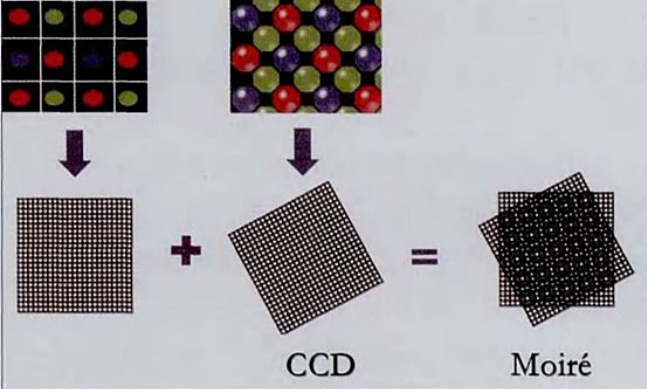
figure 1
Since the grid structure of the LED display screen interacts with the grid structure of the camera CCD to form moiré patterns, changing the relative value and grid structure of the grid structure of the camera CCD and the grid structure of the LED display screen can theoretically eliminate or reduce the moiré pattern. moiré.
3. How to change the grid structure of the camera CCD and LED display?
There are no regularly distributed pixels in the process of recording images on film, so there is no fixed spatial frequency and no moiré.
Therefore, the moiré phenomenon is a problem brought about by the digitization of TV cameras. To eliminate moiré, the resolution of the LED display image captured in the lens should be much smaller than the spatial frequency of the photosensitive element. When this condition is satisfied, it is impossible to have stripes similar to the photosensitive element in the image, and there will be no moiré.
In some digital cameras, in order to reduce moiré, a low-pass filter is installed to filter out the higher spatial frequency part of the image, but this will reduce the sharpness of the image. Some digital cameras use photosensitive elements with higher spatial frequencies.
How to change the relative value of the camera CCD and the grid structure of the LED display?
1. Change the camera shooting angle. Moiré can be eliminated or reduced by rotating the camera and changing the angle of the camera slightly.
2. Change the shooting position of the camera. By moving the camera side to side or up and down, moiré can be removed or reduced.
3. Change the focus setting on the camera. Too sharp focus and high detail on fine patterns can cause moiré, slightly changing the focus setting can change the sharpness and in turn help eliminate moiré.
4. Change the focal length of the lens. Different lenses or focal length settings can be used to eliminate or reduce moiré.
The LED display screen is composed of independent light-emitting pixels, and there are obvious non-light-emitting black areas between the pixels. Find a way to turn the non-luminous black area into a light area, and the brightness difference with the independent light-emitting pixels becomes smaller, which can naturally reduce or even eliminate moiré.
4. Is there a way for the LED display to turn the non-luminous black area into a light area?
It is easy to do this with the LED display of the COB packaging process. If we have the opportunity to put the COB LED display and the SMD LED display together, we can easily find that: the COB LED display glows softly like a surface light source, while the SMD LED display clearly feels that the luminous particles are one by one Independent luminous point. It can be seen from Figure 2 that the sealing method of COB package is significantly different from that of SMD. The sealing method of the COB package is the overall light-emitting surface of many light-emitting pixels together. The sealing method of the SMD package is a single light-emitting pixel, which is an independent light-emitting point.

figure 2
Summary: How to eliminate or reduce moiré on LED displays?
1. Adjust the camera shooting angle, position, focus setting and lens focal length.
2. Use a traditional film camera, a digital camera with a higher spatial frequency sensor or a digital camera with a low-pass filter.
3. Select the LED display in the form of COB packaging.
The above is how to eliminate or reduce the moiré pattern of the full-color LED display screen compiled by Liancheng Xiaobian. Welcome to add or correct. Lianchengfa is a world-leading provider of LED display applications and solutions, as well as a national-level professional and special new small giant enterprise. The main business covers four major sections: "Smart City", "Cultural Tourism Commercial Performance", "Commercial Display Engineering", and "Content Technology". It has the world's leading automated production equipment, modern post-doctoral research laboratories and comprehensive sales and services. team. Friends who want to buy LED displays can also contact us Lianchengfa led display manufacturer, a big country brand, trustworthy!


